My student Troy was working on the geologic history of the Thoroughfare Gap regions for his Honors project this semester, and we went out there last week to check out some stuff. One thing I was struck by was how much more deformed these rocks were than I had expected. This was particularly evident in some coarse meta-sandstones and meta-conglomerates of the Weverton Formation, which showed some well-developed deformational fabrics:
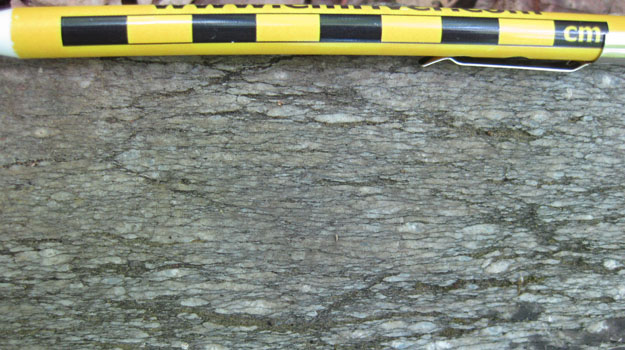
These former sand grains and pebbles of quartz are quite flattened. There’s one in the middle of this next image that is almost a ribbon, undulating across the outcrop:
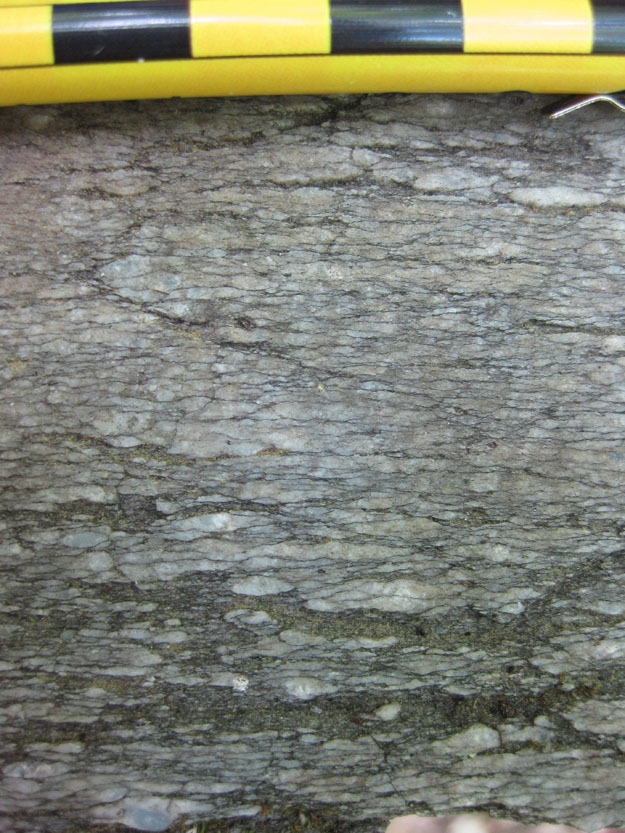
Closer. Also note the cluster of sutured grains at lower right:
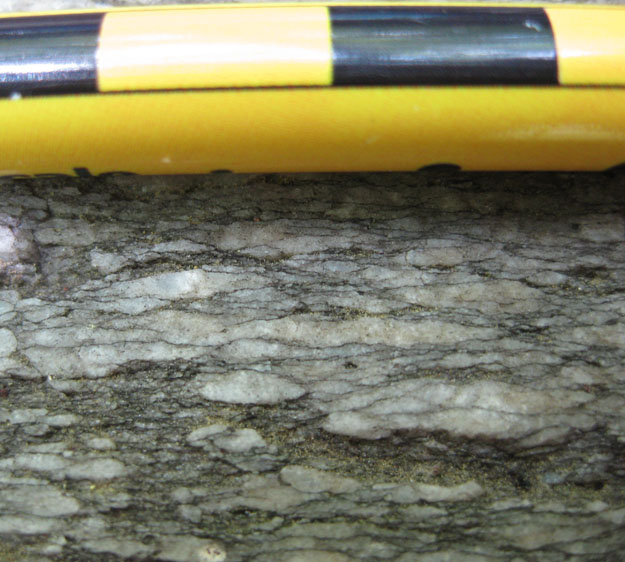
Here’s a look at the plane of foliation:
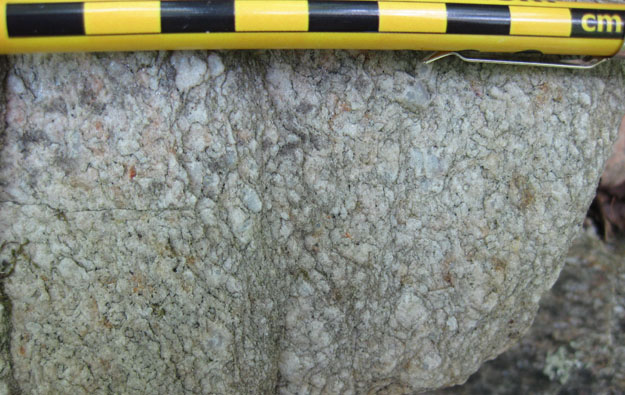
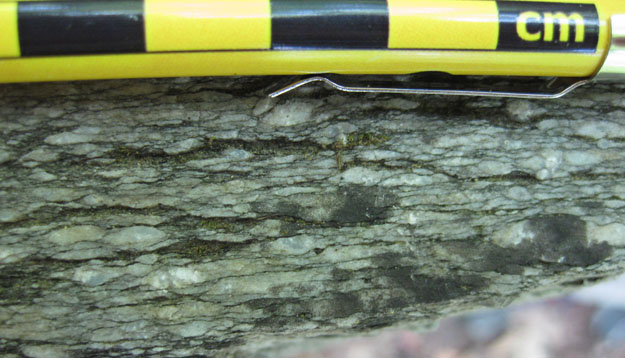
Am I seeing an S-C fabric here, or is that just wishful thinking? (top to the right = northwest side to the northeast)
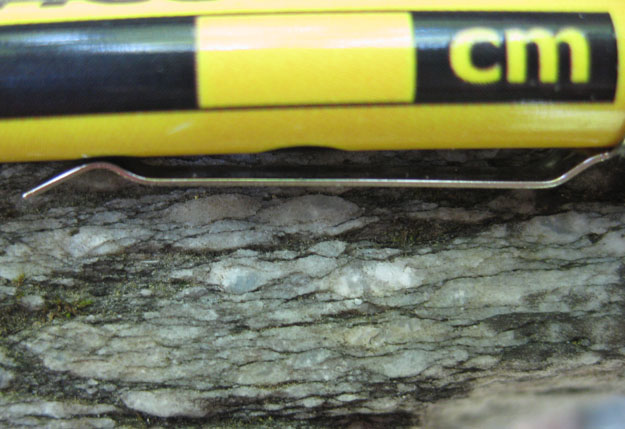
This is potentially an asymmetric porphyroclast, indicating a top to the right (northwest side to the northeast) sense of shear:

Here’s a look at some sutured quartz pebbles (evidence of pressure dissolution, as we saw last summer at the Purgatory Conglomerate in Rhode Island). Box shows area of ensuing zoomed-in photo:
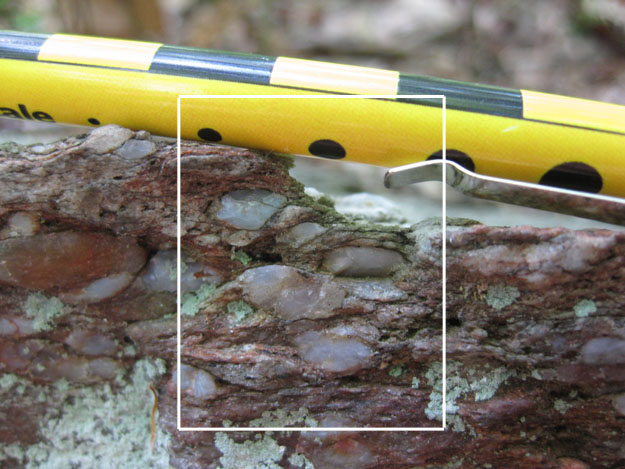
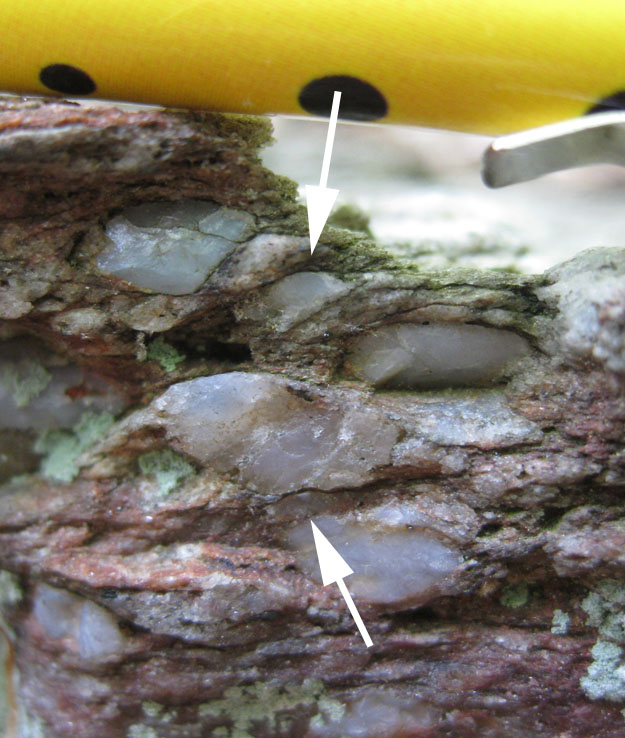
And this is impressive, a sample of float from the area, showing a stretched-pebble conglomerate with a well developed lineation. You’re looking at the plane of foliation (as shown by the shiny phyllite layer in the foreground). At deeper levels in teh sample, you can see a pebbly layer where all the pebbles’ long axes line up in the same direction, like school of fish all swimming in the same direction:
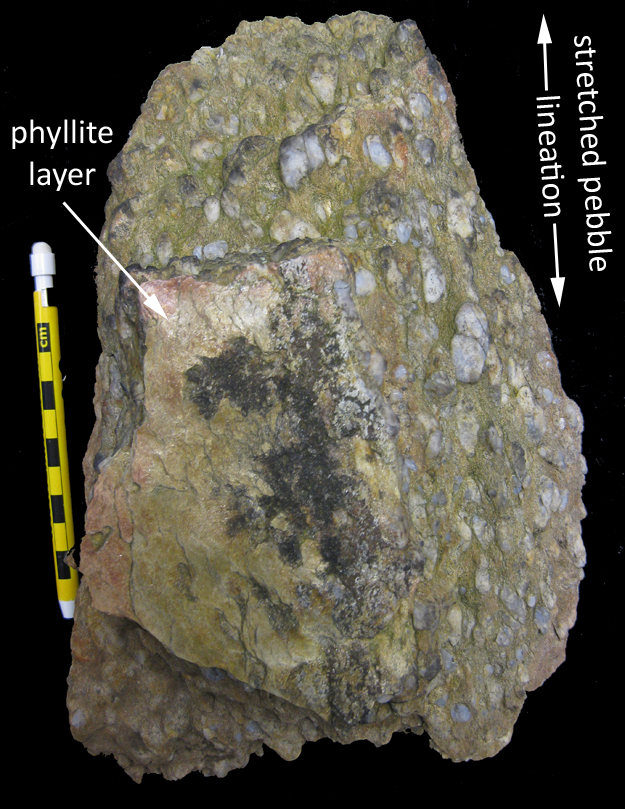
The story of Thoroughfare Gap seemed pretty simple the first time I went there, but gets more complicated (and thus more interesting) every time I return. So I guess I’ll be spending more time there in the years to come…

Incredible. What a perfectly trained eye you have.